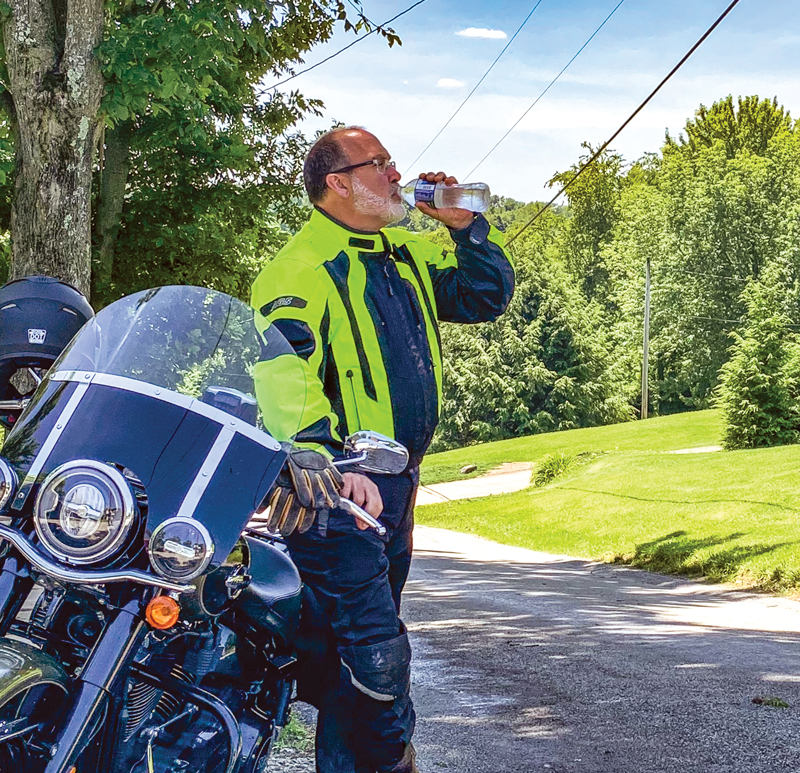
The first step to addressing a problem is to first acknowledge that you have a problem. With that, I openly admit to all of you that I have a serious non-drinking problem. Despite years as a professional motorcycling safety expert, I habitually fail to hydrate before, during and after a ride. In excess, I don’t drink.
If you are one of the many riders like me who forgets to drink enough water, here are some indicators of dehydration and a handful of steps you can take to break your non-drinking habit.
Recognize the warning signs
If you ride for long periods without urgency to stop at a rest area to relieve yourself, you may be dehydrated. When you do go, if your pee is dark yellow, that’s a warning sign as well. If you drink a lot of coffee instead of water, you may have to go more frequently but are actually flushing out vital water reserves since coffee acts as a mild diuretic.
If your skin, mouth, lips and eyes are dry, you may be low on H2O. Similarly, if you find yourself becoming fatigued or achy, or are beginning to experience headaches, don’t wait; you’re overdue to rehydrate.
In extreme dehydration, you may become dizzy, experience elevated heartbeat and rapid breathing, or even become confused and disoriented. At that point, consider it an emergency; it’s time to get help as soon as possible.
Avoiding dehydration
Begin to drink water in the hours before you hit the road. Don’t think you can just down a large bottle of water minutes before hopping on the bike. It doesn’t work that way. Drink smaller amounts more often so your body can absorb instead of pass the vital fluid.
Pack bottles of water and make a point to refill yourself each time you refill your gas tank or stop to stretch your legs. One of the easiest ways to stay hydrated en route is to take a water bladder with you (such as those made by Camelbak). They are typically wearable and include a hose that you can sip from as you ride. Add ice to keep that water cool and refreshing.
Keep the drinking habit going after the sidestand is down for the day to continue to replenish your body and prepare for the next day’s journey.
By being more conscious of the issue and following these guidelines, I’ve begun to control my own non-drinking problem. As I do, I can ride for hours and still feel fresh at the end of the day. Hopefully these steps will help you as well. Now drink up!








Hydration is critical for me.
I ride an average of 700 a day on my trips, and dehydration is a very dangerous condition.
I always drink at least 16 ounces of water between fuel fill-ups and that seems to work even when temps are over 100 degrees.